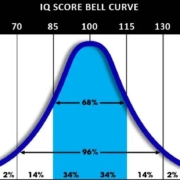Have you heard this before? Remember, the IEP starts with THE evaluation. You can’t develop goals for the student until you identify her strengths and weaknesses. And you can’t do that without a comprehensive evaluation.
Parents frequently complain to me that their child’s Committee on Special Education (CSE) tells them their children don’t qualify for certain related services (e.g. Speech and Language, Occupational Therapy, etc.) because they didn’t score low enough on some assessment the school did. But here’s the thing: schools can’t just rely on one test. According to the Individuals with Disabilities Education Act (IDEA) regulations (Sec. 300.304 for those of you keeping score at home), the CSE “must use a variety of assessment tools and strategies to gather relevant functional, developmental, and academic information about the child” to determine eligibility for special education services as well as the contents of the child’s IEP if she is deemed eligible. Furthermore, the CSE “must not use any single measure or assessment as the sole criterion for determining” whether the child qualifies for services or for “determining an appropriate educational program for the child.
What does a “variety of assessment tools and strategies” mean? Well, it includes various standardized tests, teacher and related service provider reports, classroom observations, etc. And there’s a reason for this requirement. Some assessments may give you skewed results depending upon the student’s strengths or weaknesses and the assessment’s format. Some kids are great test takers and it’s only when you observe them in the classroom that you see their struggles. Some kids seem to be doing fine in class until you find out that they are struggling to keep up by taking four hours to do homework that should only take one hour, with all the stress and anxiety that accompanies it.
Federal guidance points out that it’s especially important to use multiple assessments to assess Learning Disabilities in twice exceptional (2e) students, those children with disabilities with high cognition. It’s here that we need to get a little technical and briefly discuss the difference between “composite scores” and “sub-test scores.” A composite score is made up of various sub-test scores. It’s very common for 2e students to have an average Language composite score while still having specific weaknesses. For instance, their higher cognitive abilities, coupled with their general knowledge they bring to the test, may lead to higher comprehension scores which, when combined with lower reading Fluency or Letter-Word Identification scores, may lead to an average “composite score.” Without looking at the sub-test scores, these students may not get the intervention they need because their language skills look “average.”
A good example of relying too much on one assessment can be found with a commonly used reading program called Fountas & Pinnell Leveled Literacy Intervention (F&P). Approximately 43% of teachers use this program. The F&P Benchmark Assessment is supposed to determine a student’s independent and instructional reading grade levels. Some CSEs use these scores to deny services to students. Even without getting into criticisms of the F&P, a CSE should still be using other assessment tools to make determinations.
So, make sure you question the CSE if they are relying too heavily on one assessment, especially if other assessments are showing weaknesses. And if you don’t feel your child’s CSE is evaluating your child appropriately, or if they are delaying her evaluation, you have the right to request an Independent Educational Evaluation (IEE).
If you have any questions, feel free to contact me.









